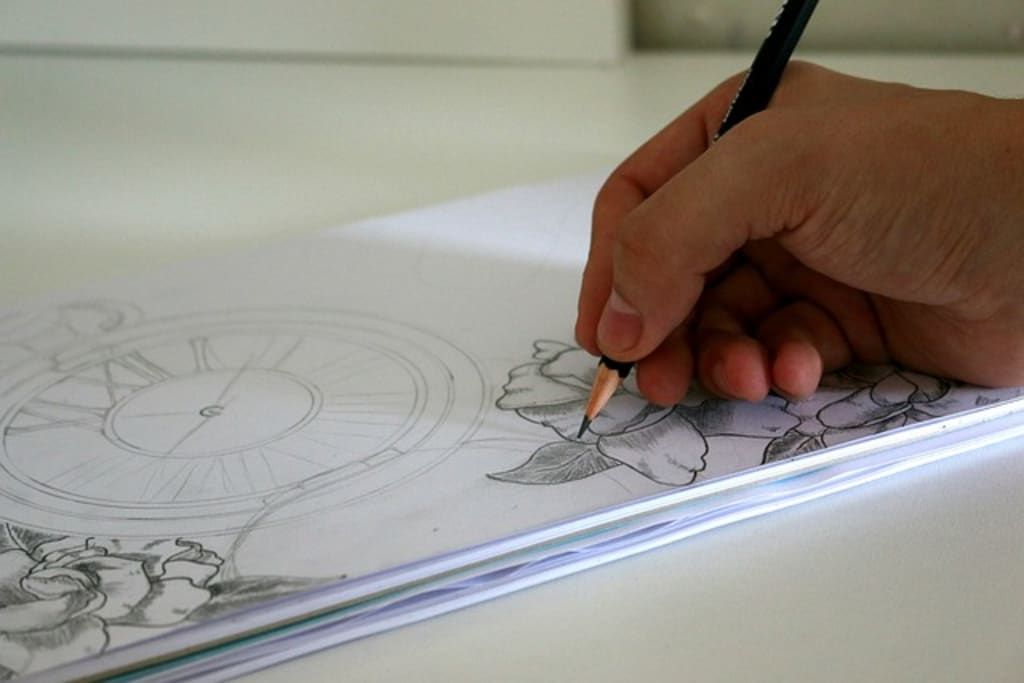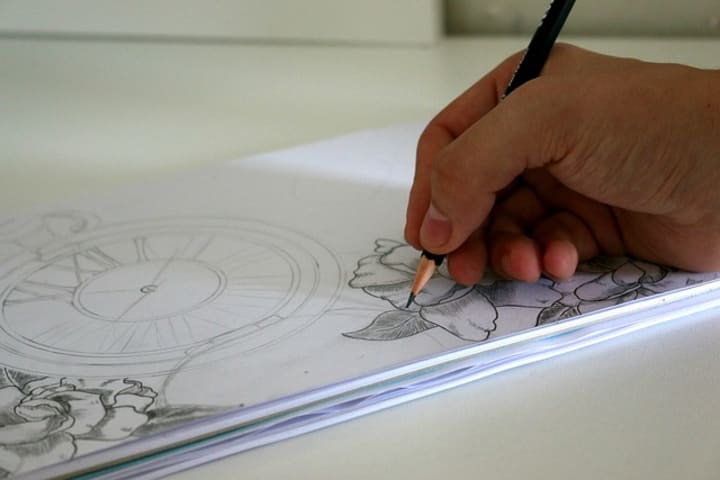
Imagine holding nothing but a simple pencil, yet possessing the power to transform a blank sheet of paper into a stunning work of art. Each line you draw brings life to the canvas, capturing emotions, stories, and worlds that resonate deeply with those who gaze upon them. This metamorphic journey from a novice to an adept artist is not just rewarding but also incredibly fulfilling. Whether you are inspired by the delicate strokes of a portrait or the bold lines of architectural sketches, this guide will be your gateway to mastering the art of pencil drawing for beginners.
Starting this artistic adventure can feel daunting—after all, where do you even begin? But fear not! This blog post will unravel the mysteries of how to pencil drawing for beginners, offering step-by-step insights that demystify the process. From understanding the basics of holding a pencil to exploring techniques that bring dimension and depth to your sketches, we cover it all. Unlocking these secrets will empower you to create captivating drawings with ease and confidence. So, sharpen your pencils and stretch your fingers; your journey into the enchanting world of pencil drawing starts now!
The Magic of Pencil Drawing: Embracing the Artistic Journey
Pencil drawing is a magical art form that allows you to express your creativity and bring your imagination to life. With just a simple pencil, you can create intricate and detailed drawings that captivate the viewer. But where do you begin on this artistic journey? Let’s explore the essential tools and techniques for beginners to unlock the magic of pencil drawing.
Essential Tools for Beginners: Choosing the Right Pencils and Paper
Before diving into the world of pencil drawing, it’s important to have the right tools at your disposal. The first step is selecting the right pencils. There are various types of pencils available, each with different levels of hardness or softness. For beginners, it’s recommended to start with a set of graphite pencils ranging from 2H (hard) to 6B (soft). This range will allow you to experiment with different shades and textures in your drawings.In addition to pencils, choosing the right paper is crucial for achieving optimal results. Look for a sketchbook or drawing pad specifically designed for pencil drawings. These papers have a smooth surface that allows the graphite to glide effortlessly across the page. Avoid using regular printer paper as it may not be able to handle multiple layers of shading and erasing.
Mastering Basic Drawing Techniques: Lines, Shapes, and Textures

Now that you have your tools ready, it’s time to dive into basic drawing techniques. The foundation of any drawing lies in understanding lines, shapes, and textures. Experiment with different types of lines – straight lines, curved lines, thick lines, thin lines – and observe how they can convey different emotions or create depth in your artwork.Next, practice sketching basic shapes such as circles, squares, triangles, and rectangles. These shapes serve as building blocks for more complex drawings. Pay attention to proportions and perspectives as you sketch these shapes from different angles.Once you feel comfortable with lines and shapes, it’s time to explore textures. Experiment with hatching, cross-hatching, stippling, and shading techniques to add depth and dimension to your drawings. These techniques involve using various pencil strokes to create different textures, such as smooth surfaces or rough textures.
Bringing Life to Your Drawings: Exploring Light and Shadow
One of the most important aspects of pencil drawing is understanding light and shadow. Light and shadow create contrast, depth, and realism in your drawings. Start by observing how light falls on objects in your surroundings. Notice the areas that are illuminated and the areas that are in shadow.To create the illusion of light and shadow in your drawings, use different shades of graphite pencils. The areas that receive direct light should be lighter in tone, while the areas in shadow should be darker. Gradually build up layers of shading to achieve a realistic effect.
Bringing Life to Your Art: Tips for Adding Detail and Realism
Details are what bring a drawing to life. Pay attention to the small details that make an object unique – the texture of a petal, the wrinkles on a face, or the patterns on a fabric. Use different pencil strokes and techniques to capture these details accurately.To achieve realism in your drawings, focus on observation skills. Study photographs or real-life objects closely and try to replicate them on paper. Pay attention to proportions, angles, and relationships between different elements.
Drawing Inspiration from Nature: Capturing Landscapes and Still Life
Nature is an abundant source of inspiration for pencil drawing artists. Whether it’s capturing the beauty of landscapes or still life objects like flowers or fruits, nature offers endless possibilities for creativity.When drawing landscapes, pay attention to perspective – how objects appear smaller as they recede into the distance. Experiment with different shading techniques to depict various elements like trees, mountains, or bodies of water.For still life drawings, arrange objects in an interesting composition and observe how light interacts with them. Use shading techniques to create depth and capture the textures of different objects.
Conclusion: Embracing the Endless Possibilities of Pencil Drawing
In conclusion, pencil drawing is a magical art form that allows you to unleash your creativity and create stunning works of art. By understanding the essential tools, mastering basic techniques, exploring light and shadow, adding detail and realism, and drawing inspiration from nature, you can embark on an artistic journey that knows no bounds.So grab your pencils, sketchbooks, and let your imagination run wild. With practice and dedication, you’ll unlock the true potential of pencil drawing for beginners. Remember to enjoy the process and embrace the endless possibilities that pencil drawing offers. Happy sketching!
What do I need to start pencil drawing?
To start pencil drawing, you will need a few essential tools. First and foremost, you will need a set of graphite pencils ranging from 2H (hard) to 6B (soft). These pencils will allow you to experiment with different shades and textures in your drawings.In addition to pencils, it’s important to have the right paper for pencil drawings. Look for a sketchbook or drawing pad specifically designed for this purpose. These papers have a smooth surface that allows the graphite to glide effortlessly across the page.Lastly, don’t forget about erasers! A kneaded eraser is ideal for pencil drawings as it can be shaped into different forms for precise erasing. It’s also helpful to have a regular eraser for larger areas.
Best Pencils for Pencil Drawing Beginners
For beginners in pencil drawing, it’s recommended to start with a set of graphite pencils ranging from 2H (hard) to 6B (soft). This range will allow you to experiment with different shades and textures in your drawings.The harder pencils like 2H or HB are great for sketching outlines and light shading. They produce lighter lines and are easier to erase. On the other hand, the softer pencils like 2B or 4B are ideal for adding darker tones and creating depth in your drawings.As you gain more experience and confidence, you can expand your collection of pencils to include harder or softer grades based on your personal preference and artistic style.
Best sketchbooks for beginners in pencil drawing
When it comes to choosing a sketchbook for pencil drawing, there are a few factors to consider. First, look for a sketchbook with paper that has a smooth surface. This will allow the graphite to glide effortlessly across the page.Size is another important consideration. A smaller sketchbook is portable and convenient for sketching on-the-go, while a larger sketchbook provides more space for detailed drawings.Some popular brands that offer high-quality sketchbooks for pencil drawing include Strathmore, Canson, and Moleskine. These brands offer different paper weights and sizes to suit your preferences.
How to Hold a Pencil When Drawing
The way you hold your pencil can greatly affect the outcome of your drawings. There is no one “correct” way to hold a pencil when drawing; it ultimately depends on what feels comfortable for you. However, here are some common techniques:1. Tripod Grip: Hold the pencil between your thumb and index finger, resting it on the middle finger. This grip allows for better control and precision.2. Overhand Grip: Hold the pencil higher up near the tip with all fingers positioned above the point where graphite touches paper. This grip is useful when shading large areas or making broad strokes.3. Underhand Grip: Hold the pencil closer to its end with all fingers positioned below the point where graphite touches paper. This grip provides more freedom of movement and is often used for loose sketches or expressive lines.Experiment with different grips and find the one that feels most natural and comfortable for you. Remember, the goal is to have control over your pencil while maintaining a relaxed hand position.
What is the basic of pencil sketch and sketching?
Pencil sketching is a technique of drawing using graphite pencils. It involves creating lines, shapes, and textures on paper to represent objects or scenes. Sketching is often used as a preliminary step in creating more detailed artworks or as a standalone art form.The basic elements of pencil sketching include:1. Lines: Lines are the foundation of any drawing. They can be straight, curved, thick, thin, or dashed. Lines can define the outline of an object or create texture and shading.2. Shapes: Shapes are created by combining lines to form two-dimensional figures such as circles, squares, triangles, or rectangles. These shapes serve as building blocks for more complex drawings.3. Textures: Textures add depth and realism to drawings. They can be created using various pencil strokes such as hatching (parallel lines), cross-hatching (intersecting lines), stippling (dots), or shading (gradual transition from light to dark).By mastering these basic elements and practicing different techniques, you can create expressive and captivating pencil sketches.
How do I learn pencil drawing from scratch?
Learning pencil drawing from scratch requires practice, patience, and a willingness to experiment. Here are some steps you can follow:1. Start with Basic Shapes: Begin by practicing simple shapes like circles, squares, triangles, and rectangles. This will help you understand proportions and develop your hand-eye coordination.2. Study Observation: Observe objects around you closely – their forms, textures, light/shadow patterns – and try to replicate them on paper. Pay attention to details like angles and relationships between different elements.3. Experiment with Techniques: Explore different techniques like hatching (parallel lines), cross-hatching (intersecting lines), stippling (dots), and shading (gradual transition from light to dark). Practice these techniques to create depth and texture in your drawings.4. Learn from References: Study photographs, artworks, or real-life objects as references. Analyze how artists have captured different elements and try to incorporate those techniques into your own drawings.5. Seek Feedback: Share your work with others, whether it’s friends, family, or online communities. Constructive feedback can help you identify areas for improvement and provide motivation to keep learning.6. Practice Regularly: Like any skill, pencil drawing requires regular practice. Set aside dedicated time each day or week to hone your skills and explore new techniques.Remember, learning pencil drawing is a journey that takes time and dedication. Embrace the process and enjoy the creative freedom it offers.
What is the best place for learning pencil sketching online?
The internet offers a wealth of resources for learning pencil sketching online. Here are some popular platforms where you can find tutorials, courses, and communities dedicated to pencil drawing:1. YouTube: YouTube hosts a vast collection of tutorial videos on various aspects of pencil drawing. Many artists share their techniques, tips, and step-by-step demonstrations that you can follow along with.2. Online Courses: Platforms like Udemy, Skillshare, and Coursera offer online courses specifically designed for beginners in pencil drawing. These courses provide structured lessons taught by experienced instructors.3. Online Art Communities: Joining online art communities like DeviantArt or Reddit’s r/learnart can connect you with fellow artists who share their work, provide feedback on yours, and offer valuable advice on improving your skills.4. Artist Websites/Blogs: Many professional artists maintain their own websites or blogs where they share tutorials, tips, and insights into their creative process. Explore these resources to learn from established artists in the field.When choosing an online resource for learning pencil sketching, consider your learning style, budget, and the specific skills you want to develop. Experiment with different platforms and find the one that resonates with you.Is pencil or paper drawing easier for beginners? Why?Both pencil and paper drawing have their own advantages and challenges for beginners. The choice between the two ultimately depends on personal preference and artistic goals.Pencil Drawing: Pencil drawing offers more control and precision compared to other mediums like paints or pastels. Pencils allow for fine details, shading, and easy erasing. They are also relatively inexpensive and portable, making them a popular choice for beginners.Paper Drawing: Paper drawing encompasses a wide range of mediums such as charcoal, ink, or markers. Each medium has its own unique characteristics that can create different effects. Paper drawings often have a distinct texture that adds depth to the artwork.In terms of ease for beginners, pencil drawing may be considered slightly easier due to its forgiving nature. Pencils can be easily erased or corrected if mistakes are made. They also provide a smooth transition from sketching basic shapes to adding intricate details.However, it’s important to note that both pencil and paper drawing require practice and patience to master. With dedication and perseverance, beginners can excel in either medium.
What is the easiest drawing for beginners?
For beginners in drawing, starting with simple subjects can build confidence and provide a solid foundation. Here are some ideas for easy drawings:1. Basic Shapes: Practice sketching circles, squares, triangles, or rectangles from different angles. This will help you understand proportions and develop your hand-eye coordination.2. Fruit: Draw simple fruits like apples or oranges using basic shapes as building blocks. Pay attention to details like texture or highlights on the surface of the fruit.3. Flowers: Start with uncomplicated flowers like daisies or tulips. Observe their basic shapes – petals, stems – and experiment with shading to add depth.4. Animals: Begin with animals that have simple shapes, such as fish or birds. Focus on capturing their basic forms and gradually add details like feathers or scales.5. Landscapes: Start with basic landscapes like a beach or a hillside. Break down the scene into simple shapes and experiment with shading to create depth.Remember, the key is to start small and gradually build your skills. As you gain confidence, you can tackle more complex subjects and explore different techniques in your drawings.
About the Creator
Marcus
The Answer Finder under theanswerfinder.com
Enjoyed the story? Support the Creator.
Subscribe for free to receive all their stories in your feed. You could also pledge your support or give them a one-off tip, letting them know you appreciate their work.





Comments
There are no comments for this story
Be the first to respond and start the conversation.